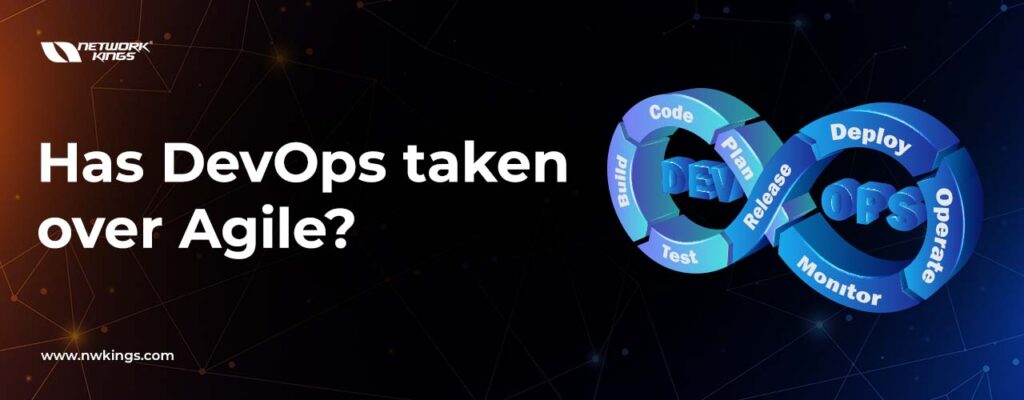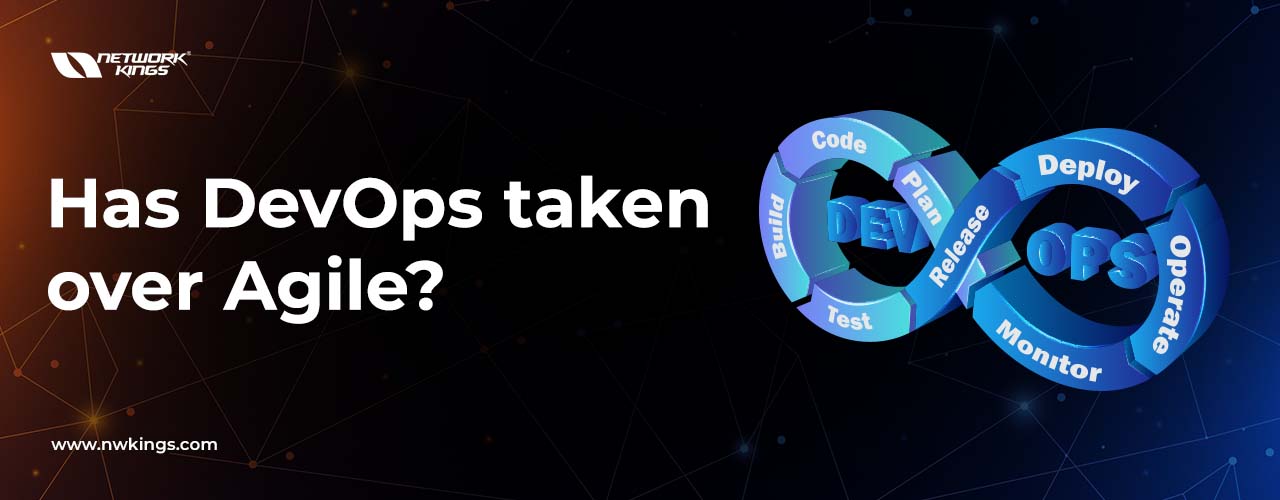
For more than 20 years, Agile has been the prime selection of IT professionals across all industries. But who’s the new intruder? You guessed it right, it’s DevOps! Although Agile was able to solve most of the software development needs, there was still a huge gap in catering to the needs of the operations team through Agile. This is why DevOps is the face of the new world.
With the adoption of DevOps, business organizations have moved forward with a better structure for deploying and managing software products as compared to using Agile software development methods that merely focus on software releases, collaboration and customer feedback. Although there are no stark differences between the applications of the two, there are still some key differences between the DevOps and Agile methodologies.
This blog is a wonderful introduction to Agile vs DevOps for those who do not know much about the two technologies. You will learn the difference between Agile and DevOps and their methodologies. Without further ado, let’s begin!
What is Agile?
The Agile methodology is an iterative approach to software development that prioritizes user feedback, quick software releases, and teamwork. It’s a management and culture philosophy that seeks to nurture in each team member a commitment to value delivery to consumers and constant improvement.
The need for Agile practices rose in the early 2000s in response to the changing market scenario and customer requirements. Its fundamental beliefs, dogma, principles and procedures were laid out in the 2001 publication titled “Manifesto for Agile Software Development.” Agile development methodologies prioritize iterative development, continuous delivery, quick change, and customer collaboration.
Compared to the waterfall methodology, the Agile approach involves the following three steps:
- Designing and planning the product is done first.
- The development stage of the product moves forward in small batches and it involves active collaboration with the stakeholders and interested individuals.
- When there is need for any change, it is incorporated continuously and quickly as compared to the waterfall methodology.
- The changes can also be made in real-time in Agile.
Agile is not just a single approach to the development process. It is rather a group of various approaches and processes that focus on collaboration and customer satisfaction. It involves principles of Scrum, Xtreme programming (XP) and other set of approaches.
What is DevOps?
Agile methods missed active alignment between software and operations teams. This gave rise to DevOps. The term ‘DevOps‘ was put forward by Patrick Debois in the year 2009.
Software development teams may build, test, and deliver software more quickly and reliably with the help of the DevOps methodology. Agile practices and concepts are implemented, including enhanced automation and development and operations teams working together more effectively. In both agile and DevOps, development, testing, and deployment take place. However, traditional agile ignores operations, which is a crucial component of DevOps.
The goals of DevOps are mentioned as follows:
- To align the working of software developers who create and design software and operation engineers who run the software in production.
- To build, maintain and look after the built infrastructure.
- To bring together the DevOps and Agile practices where the two teams of software development and operations work side by side with complete knowledge of the development process.
The DevOps methodology can be understood with the help of two frameworks, namely:
- Three Ways
- CALMS Culture, Automation, Lean, Measurement, and Sharing)
What are the objectives of DevOps?
The following are the objectives of DevOps:
- Quality assurance:
Both Agile and DevOps tech methodologies focus on the process of code testing. These practices include functional tests, unit tests, performance tests, integration tests and acceptance tests.
- Continuous improvement:
DevOps and agile methodologies encourage a culture of growth, learning, improved procedures, and advancement. Constantly making little modifications, teams enhance a product. DevOps teams identify opportunities for improvement by tracking data and doing post-incident evaluations.
Agile vs DevOps: what's the difference?
Although both of them are software development methodologies, there are many differences between DevOps vs Agile. The differences between the two are mentioned below:
Agile | DevOps |
Agile methodology focuses on incremental process of software development. It involves the collaboration of Agile teams with customers, and the teams respond quickly to even small changes. | DevOps is a modification of Agile software development practice which includes operations as a significant team. It works in close relationship with the software development team. This team deploys and delivers the products/software to the customers. |
The four main principles of Agile philosophy are:
| Based on the CALMS framework, the primary goal of DevOps is summarized by the following 5 principles:
|
Tasks are divided into smaller units called stories. Agile is an iterative approach where the team works in short iteration periods called sprints. | The process of building, testing and deploying are automated as much as possible. Continuous Development and Continuous Integration (CI/CD) pipelines help in deploying several DevOps environments at once. |
Agile makes use of regular retrospectives. | DevOps uses Infrastructure as Code (IaC) helps in managing and monitoring software development tasks. |
The team members need to be flexible, adaptable and fluent communicators. They need to have cross-functional skills. Non-technical professionals such as Business Analysts/Product Managers are also involved. | Technically inclined team members are recruited for the job of DevOps engineer. They need to have an in-depth technical knowledge of software deployment and automation. |
Agile can be implemented through different frameworks such as Scrum, Safe, Xtreme programming (XP) and Sprint. | DevOps includes focusing on collaboration, therefore, there are no definite frameworks involved. |
The team size is comparatively smaller than DevOps teams. | The teams are comparatively larger than Agile’s. |
The customer provides feedback for the released products. | The feedback is generally provided by the team members in DevOps practice. |
It is a software development methodology. | It is a business solution. |
Automation is not involved in Agile. | Automation is the main essence of DevOps. DevOps emphasizes automation. |
The main focus is on making continuous changes. | The main focus is on continuous testing and delivery. |
JIRA and Kanboard are some of the most popular Agile tools. | Puppet, Chef, Ansible and Jenkins are some of the most popular DevOps tools. |
Agile development is based on a set of ‘sprints’. | DevOps development depends on deadlines and achieving benchmarks. |
The gap is reduced between customers and development and testing. | The gap is reduced between development, testing and operations. |
Teams are supposed to be more productive. | Development, deployment and production environments are needed to reach goals. |
Is DevOps taking over Agile?
DevOps is no different from Agile. It is in fact, a product of the evolution process of Agile. You can consider DevOps as a missing piece of the puzzle that has completed the objectives of Agile. Although the Agile culture was able to improve conventional processes, there was still a huge gap between the software development and operations teams.
This is why the DevOps technology came into existence and reduced the gap between the two teams. Now, the processes of building, testing and deploying can easily be automated and the teams can collaborate better. However, this doesn’t mean that the DevOps has completely taken over.
Agile is still used to cater to the customer needs and team members. It’s just a matter of choice. While some businesses prefer DevOps, other still prefer Agile to meet their software development requirements.
Conclusion
It’s a wrap! This blog is a gentle introduction to the methodologies of Agile vs DevOps. You also learned significant differences between the two and which one is better. However, to conclude, DevOps is a new-age cultural practice that incorporates automation.
This is why DevOps is a popular choice for many companies. Since some companies struggle with the conventional ways of Agile, DevOps is a wonderful getaway for them. It has indeed bridged the gap between cross-functional teams.


